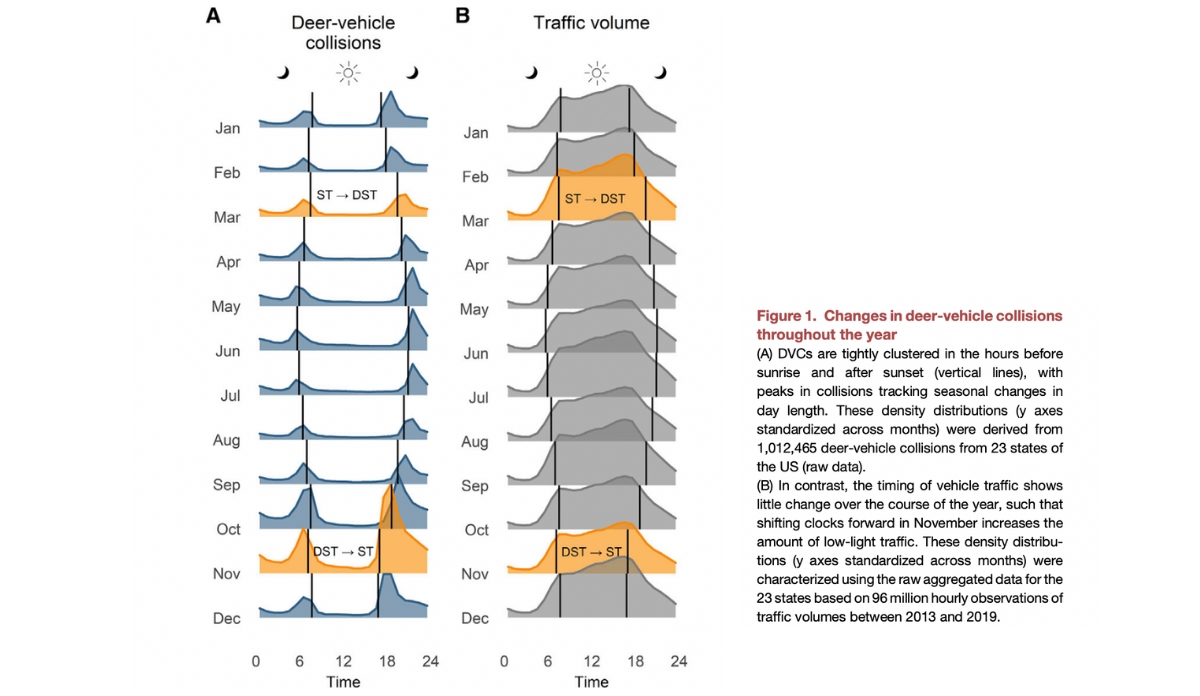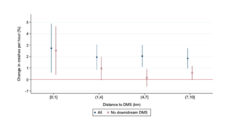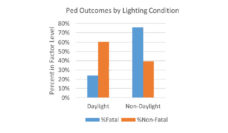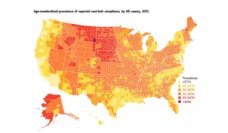Deer-vehicle collisions are expensive and dangerous. Around 2.1 million occur annually, racking up over 10 billion dollars in economic losses. These accidents also leave over 350,000 injured and hundreds dead in the process. A recent study led by Calum Cunningham and his team of environmental scientists examined these patterns. Using over 96 million hours of hourly traffic observations across more than 20 states, they found over one million deer-vehicle collisions.
Cunningham and his team found nighttime traffic and deer-vehicle collisions happened 14 times more often two hours after the sun went down compared to the previous two hours. This outcome ‘shed light’ on darker hours as a direct cause of these higher incidents. The team also found a 16% increase in collisions the week after autumn daylight savings when clocks are turned back one hour.
Seasonal shifts in human activity are the cause for this spike. Specifically, drivers frequent the road in earlier darkness and change the pattern of traffic. The weeks surrounding daylight savings also happen to coincide with a peak breeding period for several deer species, further contributing to the likelihood of collision.
Cunningham and team contend in their research that permanent, year-round daylight savings would reduce collisions and save over one billion dollars each year. They predict a reduction of traffic after sunset could spare the lives of nearly 40,000 deer, 33 humans, and avert over 2,000 injuries every year.
While the future of daylight savings may be blurry, it is clear that traveling in daylight will help drivers effectively steer clear of deer.
Databyte via Calum X. Cunningham, Tristan A. Nuñez, Yasmine Hentati, et al. Permanent daylight saving time would reduce deer-vehicle collisions. Current Biology, 2022.














